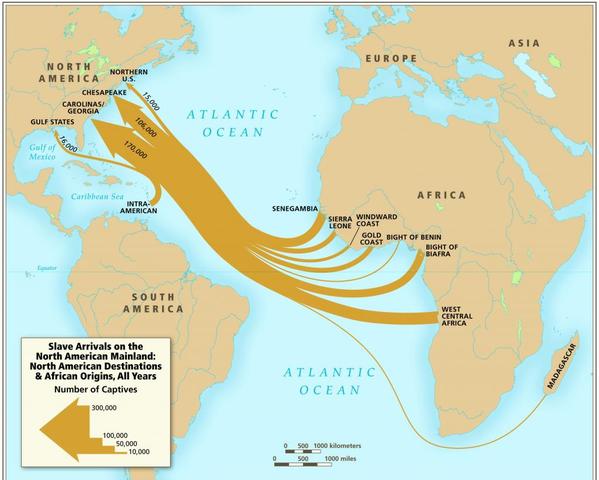

How slave ships manufactured bondage from the raw material of humanity. Ships and TreatmentShips and Treatment The Middle passage wasThe Middle passage was an extreme wretchedan extreme wretched journey for the enslavedjourney for the enslaved Africans.Africans. To put the so-called Middle Passage in context, it should be recalled that the water crossing on average took a month from Africa to Brazil and two months from the West African coast to the Caribbean and North America. Terror, Sex, and Sickness in the Middle Passage. But even one of the most important of these early writers, Thomas Fowell Buxton, argued that only some 18 percent of the mortality suffered in the trade occurred aboard ship, and that almost 71 percent occurred in the transportation of the slave to the coast, and the rest was due to the adjustment to New World conditions after landing. Women and children were often near the back of the vessel unbound while the men were packed away on 'shelves' below deck, shackled together and cramped into a squatting position. A group of eighteenth- and early nineteenth-century British propagandists developed their portrayal of the trade out of the belief that the entire transportation experience was an unmitigated disaster. The middle passage was the leg of the triangular route whereby slaves were taken from their homes and brought to other countries. It refers to the trans-Atlantic journey millions of black Africans were forced to make from Africas. One of the key features that made travelling the Middle Passage so difficult was the length of the route and the time it took for slave ships to cross the Atlantic Ocean. Middle Passage is a term from the colonial slave trade. The merchants of the trade could be opposed with impunity, whereas the American slave-owning class could not be attacked as easily. While the Middle Passage was an important economic trade route, it is also known for the terrible conditions aboard the slave ships that shipped African slaves to the New World. This has a great deal to do with the early abolitionists who found that this part of the African enslavement process was the most easily attacked. A popular literature has painted this part of the slave experience as uniquely evil and inherently more inhuman than any other of the horrors of the slave life. The Middle Passage was the second part of a very long journey that crisscrossed the Atlantic Ocean three times: from Europe to Africa, from Africa to the. Having been purchased on the African coast, the slaves destined for America would cross the Atlantic in a journey that became known as the “Middle Passage.” The manner in which these slaves were carried and the mortality they suffered have been one of the most notorious issues in the study of the Atlantic slave trade.


 0 kommentar(er)
0 kommentar(er)
